Last Updated on December 23, 2023 by lindseymahoney
Have you ever painted latex over oil based paint without properly prepping the walls?
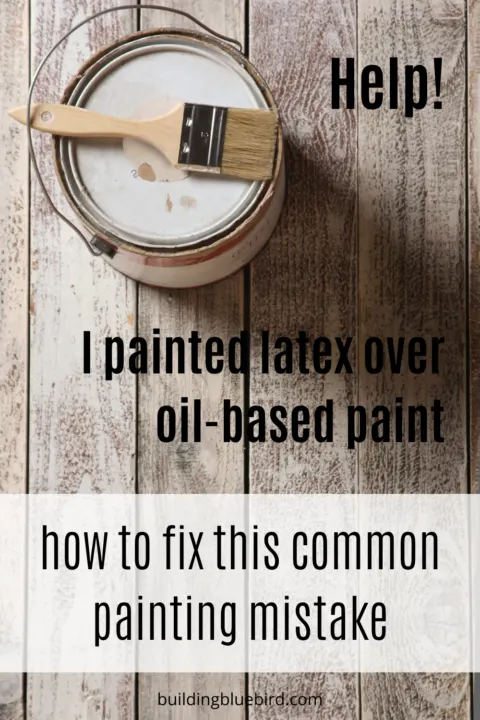
The unlucky readers who answered ‘yes’ know how painful this mistake is! Who knew there were so many different types of paint you could use in your home?! After two years of painting our new home, I had yet to run into issues with oil-based paint. Then came the mudroom makeover….
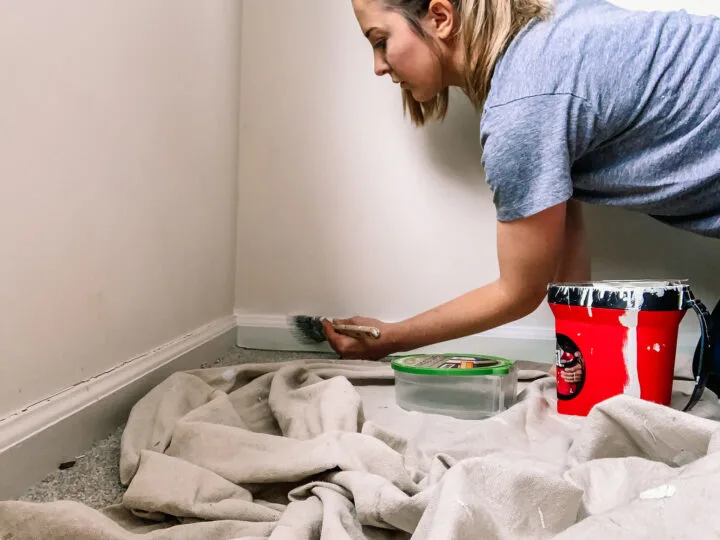
Although our mudroom is one of the smaller rooms in the house, it has 8 (!!!) doors!
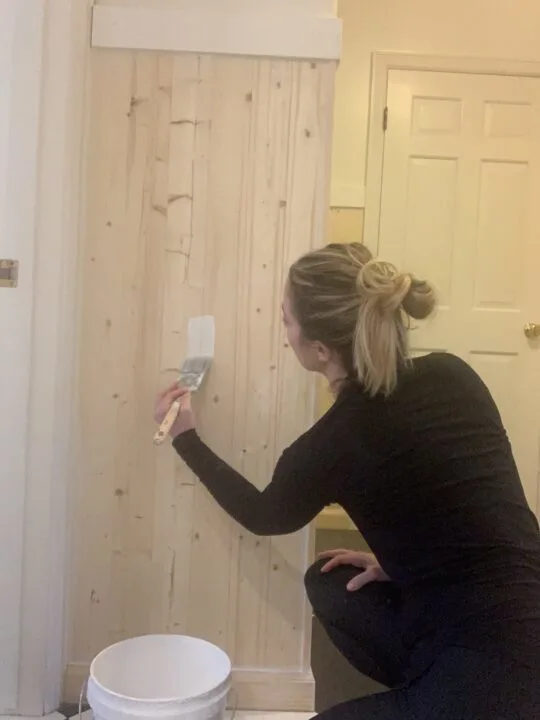
I say this because it is very time-consuming to paint doors, especially when 4 are large doors with slats. Fixing this mistake took countless hours and 5 coats of paint, but now it looks great!
How do You know that Latex was Applied over Oil Paint?
So how did I figure out that I used a latex product over old, oil base paint? There were a few signs that made me realize that something wasn’t right.
First, the new latex paint felt chalky to the touch even though it was a satin finish.
Second, the paint was chipping off at the slightest scratch. I could take my nail and easily scrape off a long strip of paint.
A quick Google search confirmed that applying latex over oil-based paint was the cause of these issues.
Ideally, I would love for you to learn from my mistake and avoid this headache when you tackle your next paint job. But if you find yourself in the same pickle as me, I will take you through the various ways to resolve this problem without hiring painting professionals!
Latex Paint vs. Oil Based Paint
- Latex paint is a water-based paint. This type of paint dries quickly and is what most people use on the interior walls of their homes.
- Oil based paint is made with either alkyd (synthetic) or linseed (natural) oils. It is more durable than water-based latex paint so it is more frequently used on trim and doors. This kind of paint takes longer to dry and requires chemicals to clean up any paint messes.
How can you tell if paint is oil based or latex?
If you suspect that your old house has oil-based surfaces, there is an easy way to check before starting your next painting project.
You will need denatured alcohol or acetone (nail polish remover) and a cotton ball. Add the alcohol to the cotton ball and rub a small area of the painted surface.
If paint comes off onto the cotton ball, it is latex paint and you are good to go. If no paint rubs off, you have oil based paint.
Homes built before 1978, may have lead paint on the walls and you may want to consider testing the existing paint for lead.
Dust from lead paint is incredibly dangerous when inhaled or ingested and there are safety protocols to follow if your home has lead paint.
How to Fix Your Mistake When you Paint Latex Over Oil
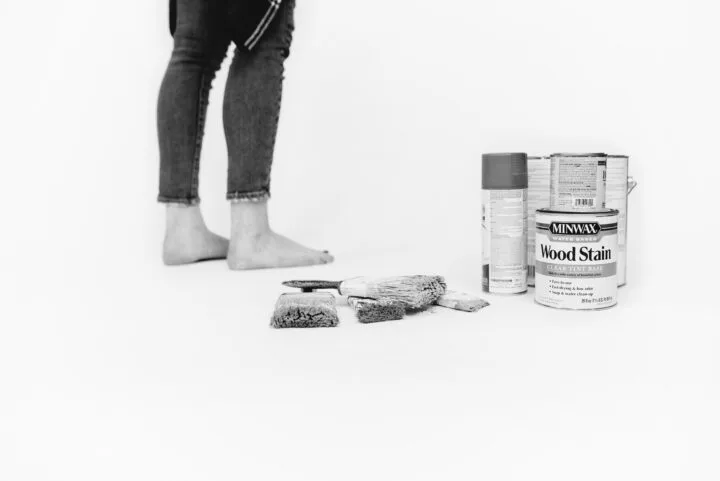
1 | Remove the Layer of Latex Paint
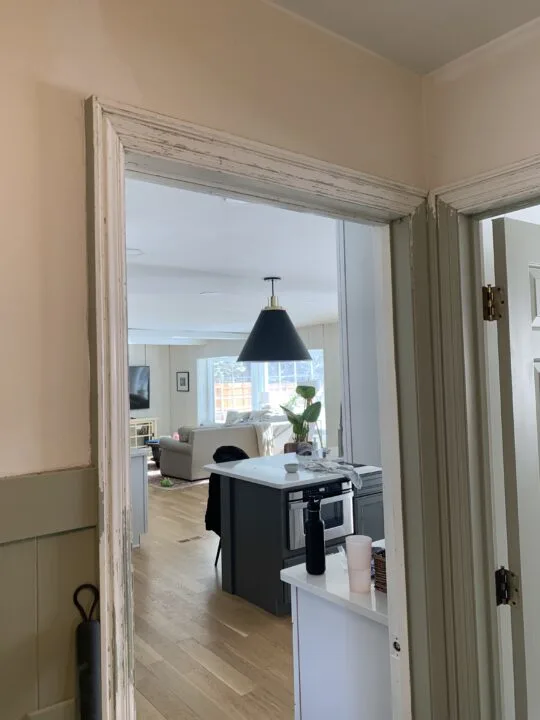
There are a few ways to remove the latex paint and one option may work better than another depending on your situation.
With all of these solutions, it is important to wear a mask to protect your lungs!
Option 1 | Warm Water & Scouring Pad
Warm water and a scouring pad work great to remove the latex paint quickly.
The downside of this option is that it is incredibly messy. Dirty water and wet paint splatter everywhere and make a big mess.
If you are working in an unfinished space, this is a good option, but it is not ideal if you need to protect the floors.
Option 2 | Paint Scraper & Scouring Pad
I ended up primarily using a paint scraper, followed by a scouring pad. Then, I used a sanding block and wiped the trim and doors down thoroughly with Krud Kutter and a clean cloth.
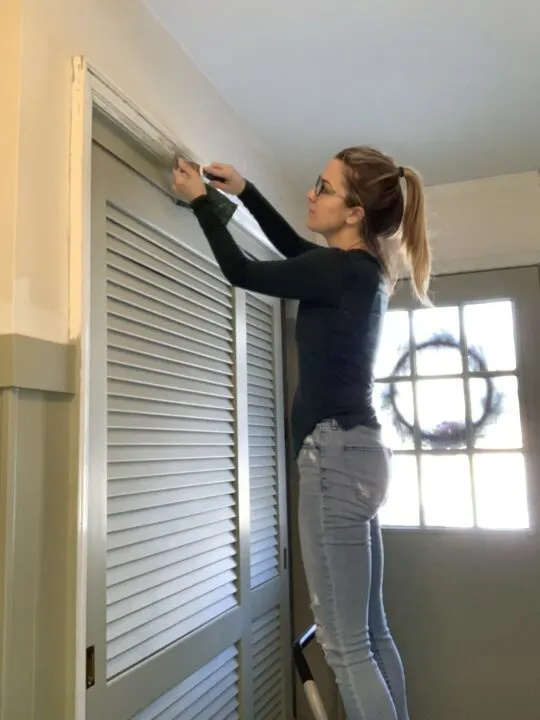
In the beginning, I forgot to wear a mask and was quickly reminded how terrible the dust particles are for your lungs! Do as I say and not as I do. 🙂
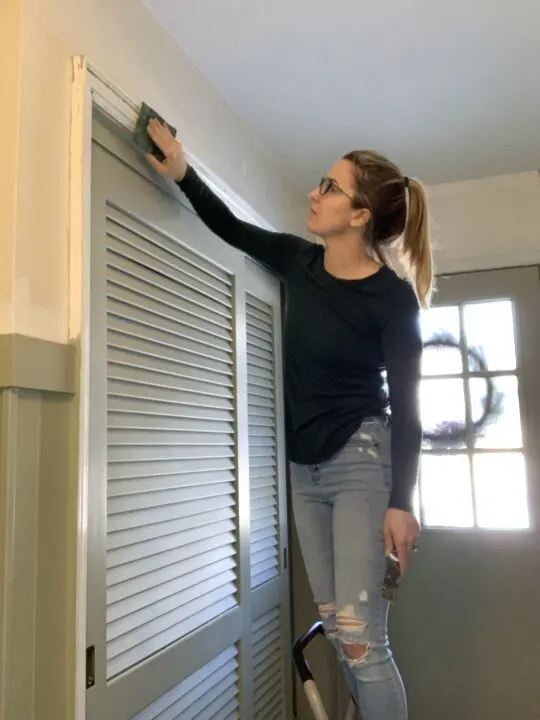
I removed most of the peeling paint and then used fine-grit sandpaper to sand it as smoothly as possible.
A few times I gouged the trim, but it is 50 years old and I wasn’t too concerned with imperfections here and there.
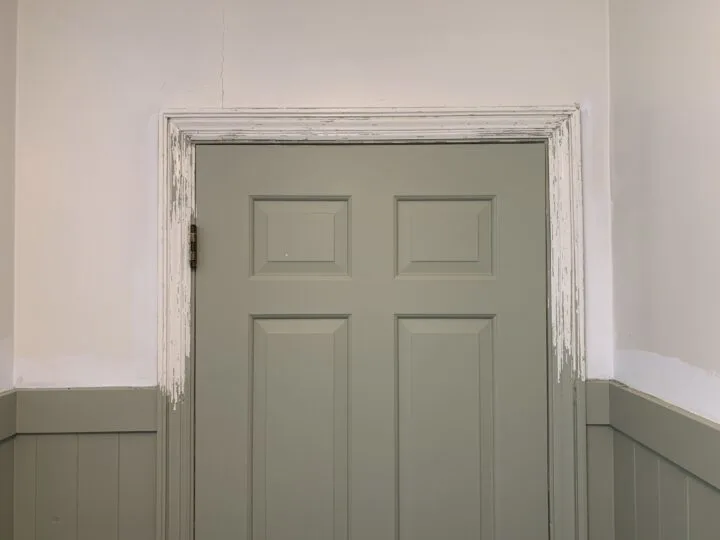
I have another confession – I skipped scraping the doors and just crossed my fingers that the bonding latex primer and trim-specific paint would suffice.
I don’t know that I would ever have finished this mudroom if I had to scrap all 8 doors!
We will see how they hold up, but they are already looking better with a good bonding primer and the trim paint applied.
Option 3 | Additional Latex Paint Removal Options
I found some other solutions to this problem online but did not test them out.
Depending on how much time you want to spend removing all of the paint, a combination of these options could speed up the process.
- Use a steamer to remove the latex paint just like wallpaper
- Krud Kutter latex paint spray remover
- Latex paint stripper
2 | Apply Extreme Bonding Primer
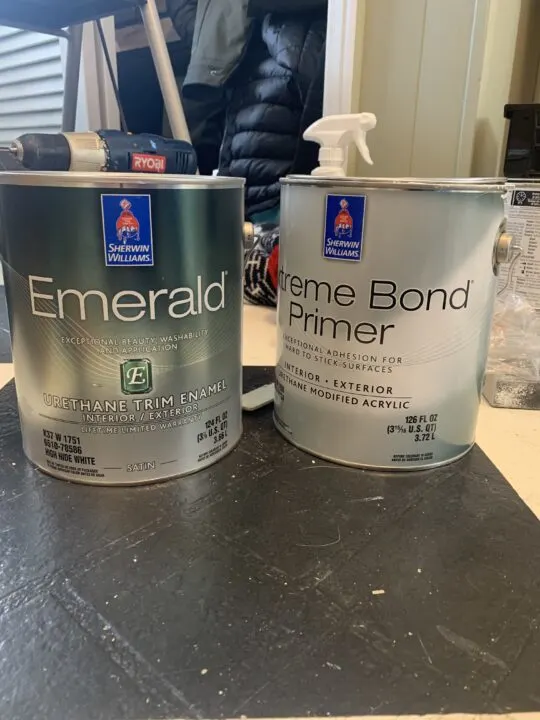
I’m giving you a big round of applause if you discovered the oil-based paint before applying latex paint over it!
This will save you a ton of time and with the right preparation, is a pretty quick fix. First, you will take a sanding block and scuff up the surface with old paint. You want to dull the glossy surfaces for better adhesion when you apply the new paint. Wipe down the surface to remove any dust and dirt.
Next, you will apply one coat of bonding primer to seal in the old oil-based paint.
3 | Apply 2 Coats of Trim & Door Paint
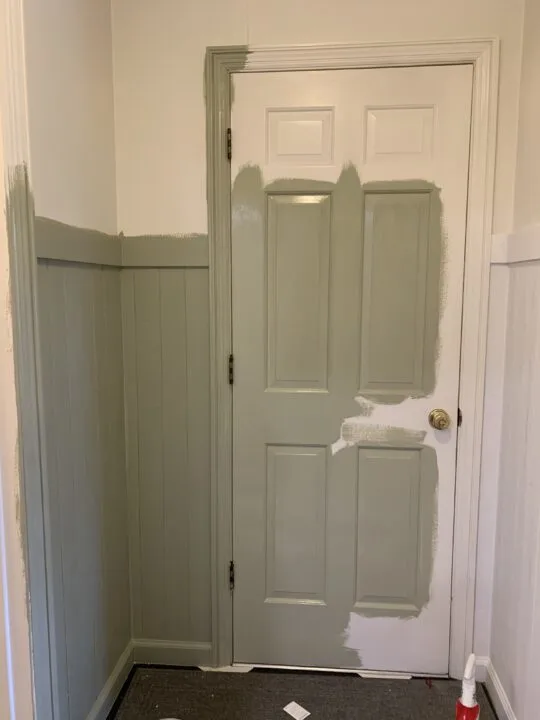
To be honest, I never used to purchase paint made specifically for trim and doors. I realize now the error of my ways!
Paint made specifically for trim and doors is much more durable for these high-impact areas and I highly recommend using it for your projects.
Once the bond primer was applied to our mudroom walls, I applied 2 coats of Sherwin Williams Emerald Urethane Trim Enamel and I can really tell the difference!
For the application, I used a combination of an angled paintbrush and a small roller to paint the surfaces.
Is oil based primer different than oil based paint?
Yes! An oil primer can accept any topcoat whether it is an oil-based product or latex. We used an oil-based primer in our home to seal in leftover wallpaper glue in our foyer.
Because latex paint is water-based, we couldn’t just paint the walls because the water reactivated the glue.
If you have ever made this mistake, it turns your wall into a gummy mess.
Instead of using a steamer to scrape off all of the glue, we were instructed to use an oil-based primer to seal in the wallpaper glue and act as a barrier coat. With the glue covered, the walls were ready for a fresh coat of paint!
Why do people use oil-based paint?
Oil based paint is extremely durable which makes it an excellent choice for trim, doors, and kitchen cabinets.
How has my mudroom held up since I fixed my mistake?
A year later the doors are in pretty good shape. They have a few paint chips on them because it is a high-traffic area, but nothing too noticeable.
Project Source List
- Extreme Bonding Primer
- Emerald Urethane Trim Enamel
- Acetone (nail polish remover)
- Angled Paint Brush
- Paint Roller
- N95 Mask
- Paint Scraper
- Scouring Pad
- Sanding Block
- Steamer
- Krud Kutter Latex Paint Spray Remover
- Latex Paint Stripper
- Drop cloth
- Lead paint test kit
Fixing this mistake was a huge pain in the butt, but it was definitely worth it.
My family is pretty rough on our mudroom and we need durable paint on the trim and doors to hold up. I hope my experience will make your paint removal process go a little bit quicker!
Mudroom Reveal
I fixed the paint mistake and then installed wallpaper to finish the mudroom makeover. I absolutely love how it turned out and am glad I took the extra time to fix my painting mistake.
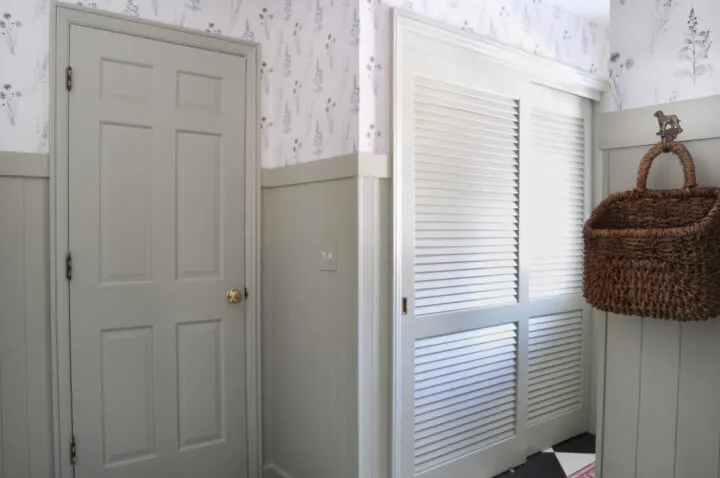
Check Out All of the Mudroom DIY Projects
- How to Hang Pre-Pasted Wallpaper by Yourself
- How to Install a Vertical Shiplap Plank Wall
- The Best Supplies for Painting Interior Spaces
- How to Paint Your Old Floors Using Rust-Oleum HOME
- Beautiful Mudroom Makeover with Tons of Charm
- 9 Decorative Wall Trim & Molding Ideas to Try
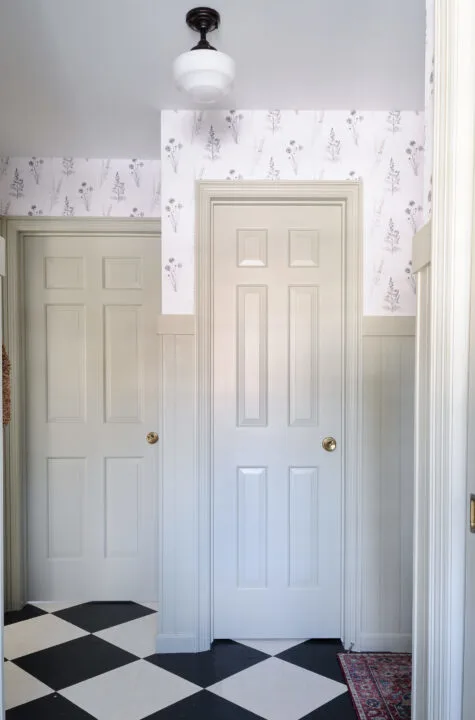
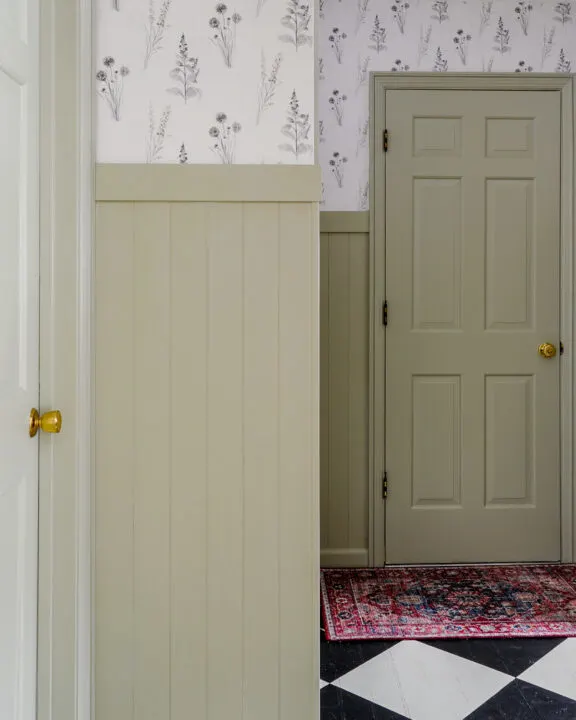
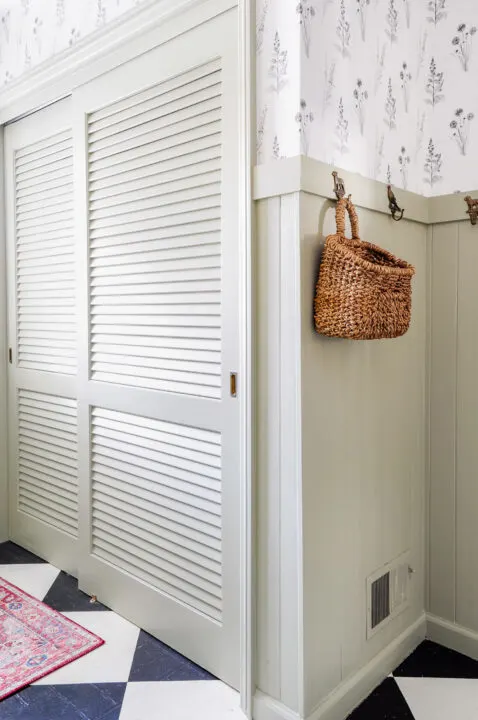
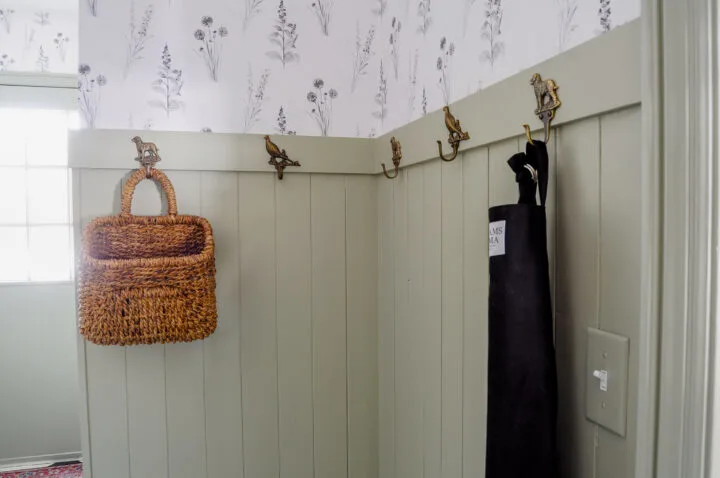
Similar Content You May Like
- How to Paint a Room and Get Professional Results
- How to Remove Wallpaper from Drywall | DIY
- Painting Furniture DIY | Ultimate Beginner’s Guide
- How to Paint a Room with Carpeting
- How to Clean Paint Brushes – The Easy Way!
- How to Paint an Exposed Basement Ceiling
- How to Paint Concrete Basement Floors Using Epoxyshield
For more tips on choosing interior paint colors, head on over to my friend Katelin’s site at The Inspiring Investment where she shares tips on picking the perfect colors!


mike
Monday 15th of April 2024
I spoke with a lady today who said her freshly painted dresser was sticky after 2 weeks. I asked her if she used water to clean her brushes, she said yes. I presume the base paint was oil. I told her that it will never properly adhere to the undercoat. I told her it will be like peeling off sunburned skin, it comes off in sheets. She thought a clear coat of latex might work... no... I advised her go to dunn-edwards or a local professional lumber and hardware store that has great customer service and is run by professional, honest employees. I feel so bad for people who make this mistake. It can turn a first time DYI project into totally foregoing DYI future projects. I hope she successfully recovers.
Denise
Wednesday 29th of November 2023
Someone, before I moved in, painted latex paint over oil paint so when I checked with the nail polish remover trick, I *thought* I was painting over latex. Well, painting with the latex paint made the original latex bubble (I guess something about the solvent in the fresh paint made it expand?). It receded once it dried but it makes the ceiling look a little funny. Next time I paint I'll have to scrape it off I imagine.
Anyway, it might be worthwhile, if you're not sure, to scrape down a layer or two.
Bebe
Wednesday 18th of October 2023
I am at the beginning of week three of scraping doors and walls, crown molding, tour railing door frames, and floor trim. I don’t believe I’m even halfway done yet. how long did it take you to do you mudroom?
lindseymahoney
Wednesday 18th of October 2023
I am sorry you have to go through this painful process! Honestly, I worked hard on removing the paint on the trim, but I cut some corners with the doors. For the doors I just applied the primer and then repainted the doors using the enamel paint. It has been a few years now and the doors have a few small chips, but it really is not bad considering how much we use our mudroom!
L
Tuesday 22nd of August 2023
How have the doors held up?
lindseymahoney
Thursday 24th of August 2023
Overall pretty well! There are a few nicks here and there but it doesn't look unusual for the wear and tear of the mudroom.
John
Monday 13th of February 2023
I painted latex over oil based on my concrete basement floor without prepping the floor. It did not hold up over the high traffic areas. Can I put a primer on and then a layer of latex floor paint
lindseymahoney
Tuesday 14th of February 2023
Honestly, I am not sure the best way to handle this. I have always used paint specifically for floors to protect them better from wear and tear. I am sure a primer will help, but you may need to scrape off the layer of latex paint before rolling on the primer.